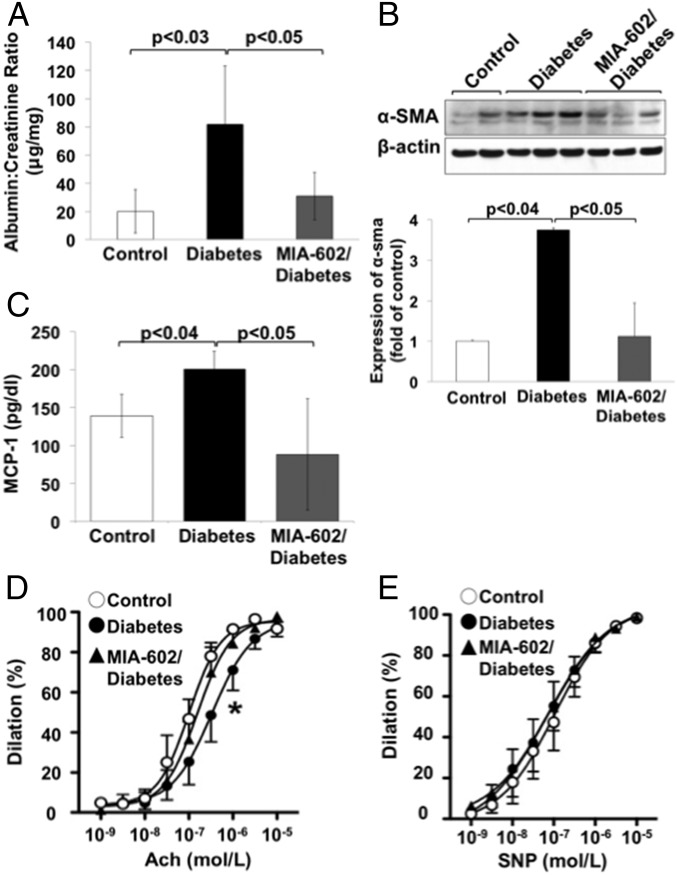Fig. 5.
GHRH antagonist reduces kidney damage and endothelial dysfunction in T1D rats. (A) Measurement of proteinuria in urine from control, T1D, and MIA-602/T1D rats, expressed as the albumin/creatinine ratio (n = 5 per group). (B, Upper) Representative immunoblot of α-sma expression (a marker of fibroblast activation and renal fibrosis) in homogenates of kidney cortex. (Lower) Densitometric analysis demonstrates a significant reduction in α-sma expression in MIA-602/diabetic rats (n = 5 per group). (C) MIA-602 treatment of T1D rats reduces plasma MCP-1 plasma levels (measured using MILLIPLEX MAP Rat Metabolic Hormone Magnetic Bead Panel, Metabolism Multiplex Assay; RMHMAG-84K; EMD Millipore). (D) Improvement in endothelial-dependent vasodilation from acetylcholine (ACh) in aortic rings of T1D rats treated with MIA-602 (n = 5 per group; *P < 0.05 vs. control group). (E) Endothelial-independent vasodilator responses to the NO donor sodium nitroprusside (SNP).

